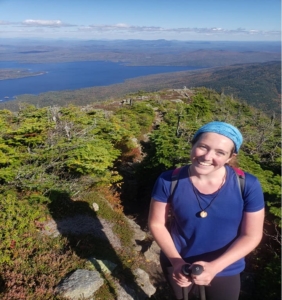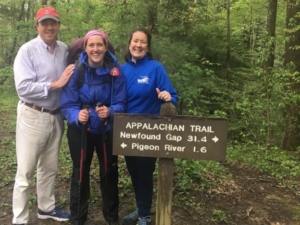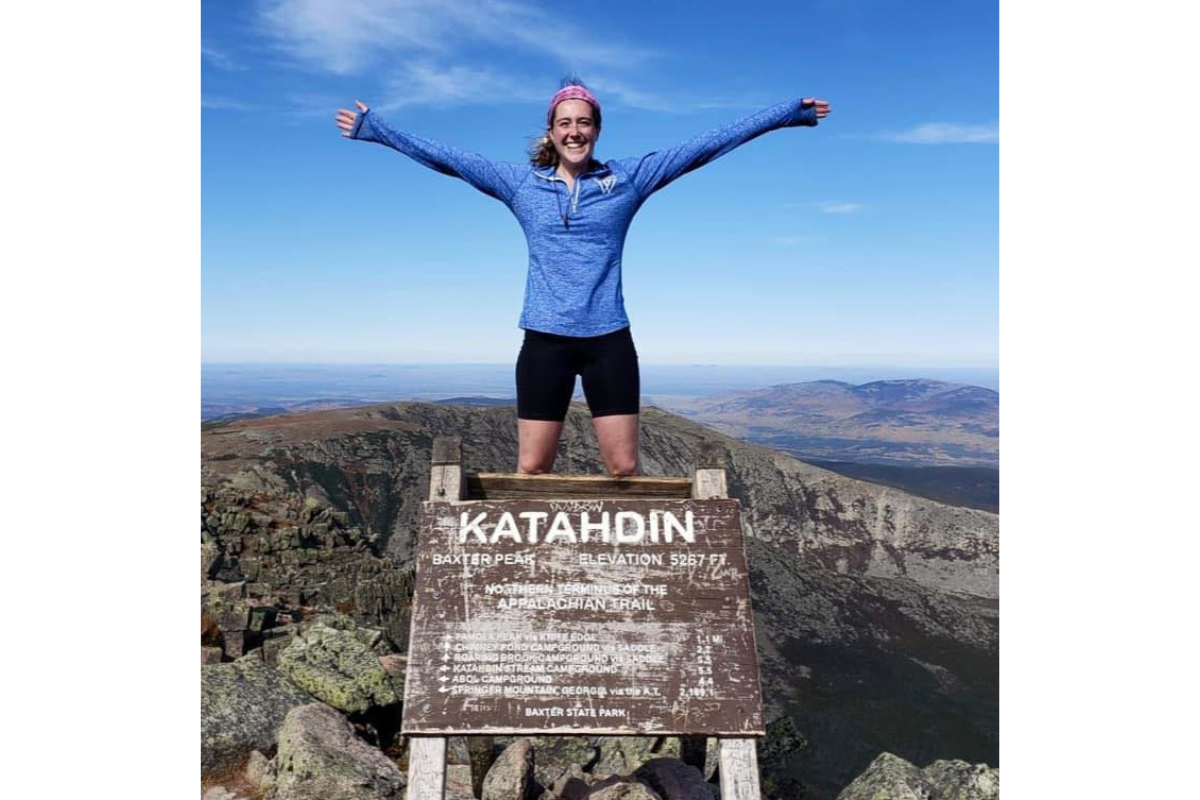Talking Transportation
By Jim Cameron
Diana Jackson walked 2,192 miles.
The Darien native is one of over 3,300 people each year who try to walk the entire length of the Appalachian Trail (the AT), from Georgia to Maine. But she’s one of the 25% of them that actually complete the task.

She learned to hike with her parents in the White Mountains of New Hampshire and at age seven announced her goal of making the entire trek. Her parents humored her, but on graduation from Wellesley College, she got serious and spent six months in preparation. “I thought of this as my gap year,” she said.
“I have a tendency of psyching myself out,” she says, so she didn’t read too many books about the dangers of the adventure. But she did drop a lot of money on a tent, sleeping bag and the first of four pairs of hiking boots…each replaced as they wore out.
Starting in late March south of Springer Mountain in Georgia, on her first night it rained and she got soaked. Crude shelters are maintained by volunteers along the trail, but they are first come, first served and the early Spring nights were as cold in Georgia as the later nights when she finished in Maine.
If Diana was lucky, she’d find a hostel just off the trail where for $25 a night she could get a bunk. But most nights her dehydrated dinners heated over her camp stove were her cuisine of choice. Her trail name was “Little Debbie” in homage to her favorite snack. But over six months she lost 40 pounds.
Though her backpack weighed 45 pounds, she was able to average about 20 miles of walking each day.
In most places, the AT is described as “the green tunnel” but in others, there are serious mountains to climb and rivers to cross (some without bridges). She relied on an app called Farout, using GPS to keep on the trail and lead her to drinkable water, shelters and hostels. At least once a day she could find a cell signal to let her family know where she was and how she was doing.
Twice she suffered injuries, falling face first and hurting her knee. She was all alone and without her usual first aid kit so she just kept going, “pushing through the pain” until she could find help.
After seven months she could see her goal in sight, 5,269 foot Mount Katahdin in northern Maine, the official end of the AT. But it took her a couple of days to reach the summit, alternately crying, laughing and filled with joy. Her parents joined her for the final climb, though she put them on a slightly easier trail.

After the victory came the inevitable letdown but also some important life lessons. “I had always doubted myself,” she says. “But now I know I can do anything.”
She’s no longer jealous of classmates with high paying jobs. “I can join the corporate world anytime, but now, when I’m young, is the time to live this dream. The trail is the happiest place for me.” As well as the beauties of nature, she misses the camaraderie of her fellow hikers.
Jim Cameron is founder of the Commuter Action Group and advocates for Connecticut rail riders. His weekly column “Talking Transportation” is archived here. You can contact Jim at CommuterActionGroup@gmail.com.



